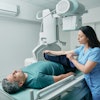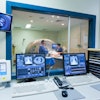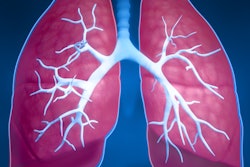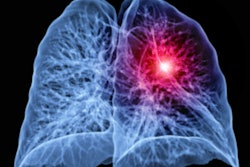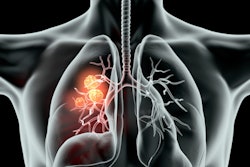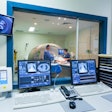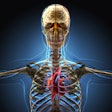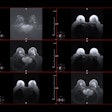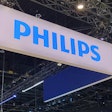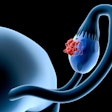 Prof. Dr. Mathias Prokop, PhD.
Prof. Dr. Mathias Prokop, PhD.
VIENNA -- Does deep learning computer-aided detection (DL-CAD) lung nodule software maximize cost savings for lung cancer screening? Perhaps not, but it does improve radiologists' workflow and reading times, according to a presentation delivered on 28 February at the ECR.
Why would deep learning CAD show promise when it comes to identifying lung nodules? It may help identify more nodules and measure them automatically (segmentation, diameter, volume), but most importantly, it could reduce radiologist fatigue and save money by speeding up reporting, said presenter Prof. Dr. Mathias Prokop, PhD, of Radboud University Medical Center (RUMC) in Nijmegen, the Netherlands. (Prokop has been elected second vice president of the European Society of Radiology (ESR); he will be first vice president in 2025 and president in 2027.)
DL-CAD can be used in different reading modes, Prokop explained, and the question is which one is best in a lung cancer screening setting:
- Concurrent mode: DL-CAD used while reporting
- Second reader mode: DL-CAD used to check for any missed lesions
- Prescreening: DL-CAD flags normal cases, freeing radiologists to read suspicious ones
He and his fellow investigators evaluated DL-CAD in these different modes in the U.S., the U.K., and Poland, assessing radiologist reading time with and without its use and calculating the monetary equivalent of saved time and minimum number of screening CT exams needed to break even for a one-time investment for DL-CAD.
Prokop outlined pricing arrangements for DL-CAD lung cancer screening software, noting that one-time installation and training can cost between €9,938 to €10,522, while hosting, monitoring, and support can cost between €4,676 to €17,304 annually. He explained that pricing models include pay-per-use (€5.9 to €8.8); one-off pricing (€51,616); and yearly subscriptions (€20,000).
The researchers found that the use of DL-CAD saved the following hourly cost of radiologist time per case:
- U.S.: €196
- U.K.: €127
- Poland: €45
| Reading time savings using DL-CAD with lung cancer screening exams | |
|---|---|
| Type of use | Seconds per case |
| Reading time savings | |
| As a second reader | 33 to 41 |
| As a concurrent reader | 77 |
| For prescreening | 104 |
| Reading time savings translated into cost savings | |
| As a second reader | €0.42 to €2.3 |
| As a concurrent reader |
€1 to €4.3 |
| For prescreening |
€0.8 to €5.7 |
Using DL-CAD for lung cancer prescreening shows high sensitivity and modest specificity, excluding 80% of nodule-free cases and thus reducing radiologist workload and reading time by 39% to 62%, he said.
The proverbial bottom line? DL-CAD lung cancer screening software must cost "substantially below six euros in a pay-per-case setting" and be used in a high-workload screening environment to break even, Prokop concluded.
"DL-CAD as a prescreening reader shows the largest potential to be cost-saving," he concluded.
For more coverage from ECR 2024, please visit our RADCast.
